








An M35 Flight Uniform for a Technical Major of the VVS
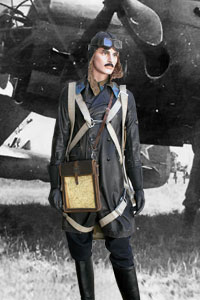
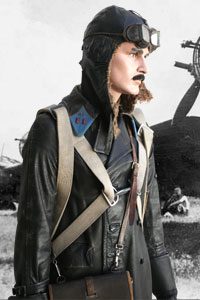
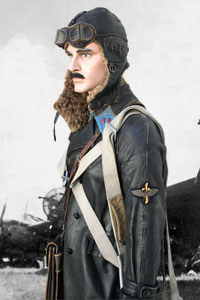
As of 1935 Regulations, Soviet pilots wore field uniforms as the primary flight outfit. On top of the uniform, pilots and crew would wear whatever was necessary to be comfortable in the chilly environs of unheated and unpressurized aircraft like the Tupolev SB-3 bombers in the background.
This technical major of the air forces wears a standard issue car coat (so called because of its length). The coat is made of basic unlined cowhide leather, stained black. The buttons are Bakelite plastic with the red army star. The cut is double breasted with straps as the sleeves for a tighter fit.
On the left sleeve of the jacket, flight personnel wore a bullion embroidered wing designating flight status. This was true of the army and the navy. This was eliminated in 1940 but continued on until 1943 with the re-introduction of shoulder boards.
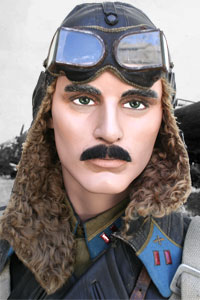
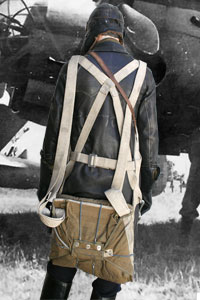
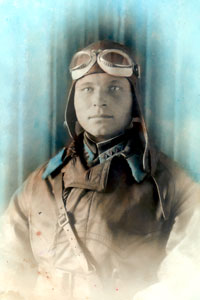
A good view of the early style of flight helmets. Early Soviet aircraft were not equipped with radios so there was no need for electronics. The long neck wrap was a distinctive Soviet feature for cold flights. The fur is Yak hide. The goggles date back to the 1920s but were worn up through the 1930s.
A back view of the jacket shows how the parachute was strapped on. Lower leg straps simply wrapped up the hanging elements of the jacket up the legs. Later flight gear would employ the more comfortable one piece flight suit and ultimately heated flight suits.
This rare hand tinted photo dated 1937 features a very senior AF officer (3 diamonds = AF Corps Commander). He is wearing a brown version of the flight jacket, map cased, early summer helmet and a pair of flight goggles made in France that were popular with all nations.
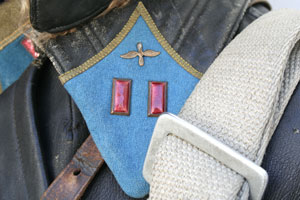
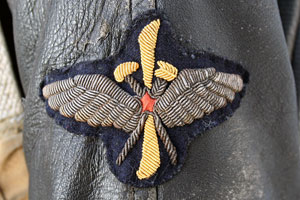
A close-up of the flight coat's collars highlights the rank indication of the 1935 regulations. The large diamond collar tabs were a feature of coats in general. The blue and gold was for aviation officers (political officers would have black piping). The winged prop device was for the air branch of the army and continued on into the shoulder boards. The hard-baked enamel rectangles indicated senior officer rank. These were replaced with stars on shoulder boards in 1943.
A nice close-up of the technical officer's wing. These featured crossed hammers and wrenches vs. crossed swords for combat pilots and crew. Technical personnel were the equivalent of flight engineers. They were critical for the operation of large aircraft and the advancement of equipment and design in the field.